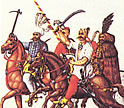
Palmanova, foundation town, has a precise date of birth: 7th October 1593. This day was chosen by the superintendents of the Republic of Venice as it called to mind two important events of the history of the Republic.
The first, a religious event, was the day in which St Justine, who would become the patron Saint of the town, was commemorated; the second, a civic event, was the anniversary of the Victory of Lepanto against the Turks on 7th October 1571.
The choice of this second event shows that the Republic of Venice wanted to leave a clear message about the function and importance of the new fortress - as a limit to Turkish invasions, not only as regards the Republic itself but for the whole of Christendom.
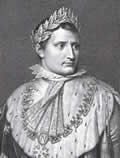
Palma had been a Venetian dominion for over 200 years (1593-1805), when General Bonaparte conquered it. After the Treatise of Campoformido the fortress entered the Austrian Empire’s area (1798-1805); and then it was conquered by the Kingdom of Italy (1806-1814).
After Napoleon’s defeat Palmanova became part of the Hapsburg Empire up until 1866- with the single interruption of the insurrection of 1848.With the plebiscite of 1866 Palmanova was definitively annexed to the Kingdom of Italy.
During the First World War it was the centre of hospitals, warehouses and an exercise field for drilling troops. With the rout of Caporetto the town suffered major devastation.
By the end of the Second World War the fortress was the seat ( Caserma Piave) of a centre of repression against the partisans.
In 1960 Palmanova became a National Monument under decree of the President of the Italian Republic
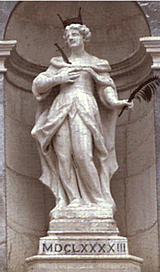
St. Justine. Young roman martyr, killed by the Prefect Massimo because she was considered guilty of being Christian and of helping her “Brothers in faith”.
Her cult would spread throughout the territories of the Venetian Republic soon after the Battle of Lepanto, won on the day on which her Saint’s day is commemorated.
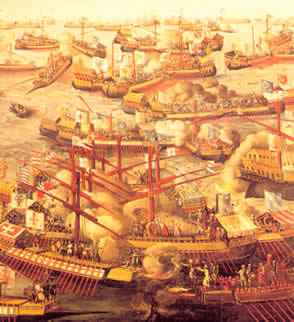
The first great sea victory of the Christian allies against the Turks occurred at the Curzolari. The Commander of the fleet of the Holy League was don Juan of Austria, natural son of Charles V.
The Turkish fleet was almost completely destroyed. About 30,000 Turkish people died or were imprisoned and 9,000 Christians perished.
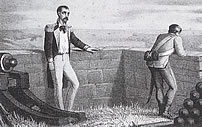
Throughout its entire history Palmanova was besieged only three times up to 1850.
The first, from 10th - 13th April 1809 by the French – the Italian garrison was barricaded in the fortress.
The Hapsburg troops left and retreated towards Vienna which under srios threat from Napoleon. Palmanova was freed by the vanguards of General Marmont.
The second, from 26th October 1813 to 19th April 1814, over 3,000 soldiers under the command of Francois Valterre’s Baron of St. Angel, were kept inside the walls, by the Austrians and suffered heavy bombings.
During one of which the Monte di Pietà (Pawnbroker’s) was burnt.
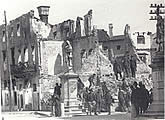
The garrison surrendered only after the Chiarino-Rizzino treaties. The French soldiers were allowed to return home, while the Italian soldiers were integrated into the Hapsburg army.
The third, and last, from 24th March to 25th June 1848 Palma rebelled together with Milan and Venice, so the fortress was isolated during the advance of the Hapsburg army in the conquest of Lombardo – Veneto.
Inside the fortress the garrison was made up of former Imperial soldiers, a division of square artillery from Piemonte , sent there to help the King Carlo Alberto, and the National Guards and Crusaders, that is to say, volunteers coming from Venice.
At the command of the rebels was Carlo Zucchi, who had served in the Italian Royal army, in the Napoleonic period and who was now serving a prison sentence in Palmanova for his participation in the anti –Austrian risings of 1831.
The town was heavily bombed and there were many different assaults ordered by the commander of the besieging troops, General Ignazio Csivich.